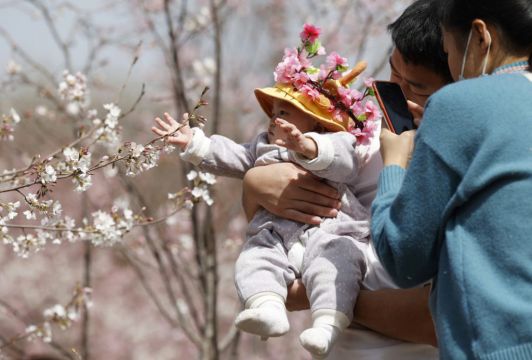The number of babies born in China continued to shrink last year as part of a decade-long trend, official data showed.
The news comes as a declining workforce adds pressure to the ruling Communist Party’s ambitions to boost national wealth and global influence.
Some 10.6 million babies were born, down 12% from the 12 million recorded in 2020, China’s National Bureau of Statistics reported.
The total population stood at 1.413 billion at the end of 2021, an increase of 480,000 from the previous year.

The decline in birth rates could undercut the ruling party’s plans to develop technology and self-sustaining economic growth based on consumer spending rather than exports and investment.
The fall in population growth has prompted warnings that China, where economic output per person is below the global average, might face a “demographic time bomb” and have too few workers to support a growing number of elderly people.
The ruling party has enforced birth limits since 1980 to restrain population growth and conserve resources.
But leaders started to worry after the working-age population peaked at 925 million in 2011 and started to drop earlier than expected.
Authorities eased birth limits starting in 2015. But couples are put off by high costs, cramped housing and job discrimination against mothers.

The percentage of people aged 16 to 59, the official working age population, edged down to 882.2 million, or 62.5% of the total, from 63.3% reported in the 2020 census. That is down from 70.1% a decade ago.
Demographers say the working-age share of the population might fall to half by 2050.
There were 267 million people aged 60 and above, or 18.9% of the total, up from 264 million, or 18.7%, in 2020.
The looming worker shortage comes as president Xi Jinping’s government boosts spending on its military and efforts to create global competitors in electric cars and other technologies.
Japan, Germany and some other rich countries face the same challenge of supporting aging populations with fewer workers. But they can draw on investments in factories, technology and foreign assets.

By contrast, China depends on labour-intensive farming and manufacturing.
The party took its biggest step in 2015 when rules that limited many couples to having only one child were eased to allow two.
China’s birth rate was already falling before the one-child rule, in parallel with trends in South Korea, Thailand and other Asian economies.
The average number of children per mother tumbled from above six in the 1960s to below three by 1980, according to the World Bank.
Demographers say official birth limits concealed a further fall in the potential number of children per family.
The one-child limit, enforced with threats of fines or loss of jobs, led to abuses including forced abortions.
A preference for sons led parents to kill baby girls, prompting warnings millions of men might be unable to find a wife, and fuelling social tension.







